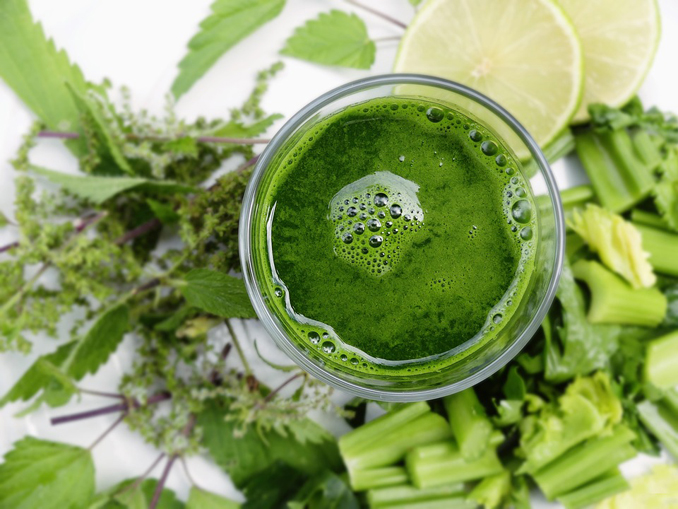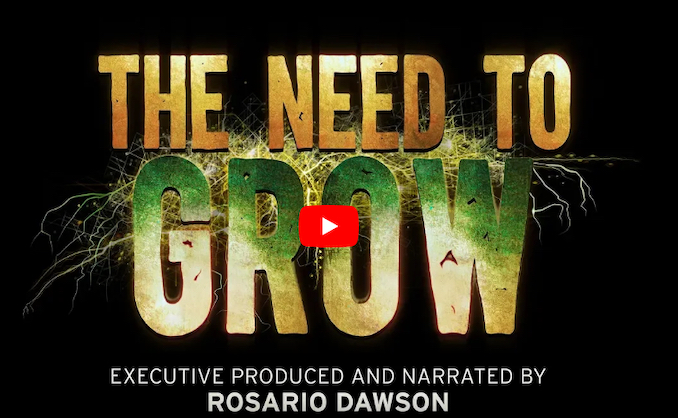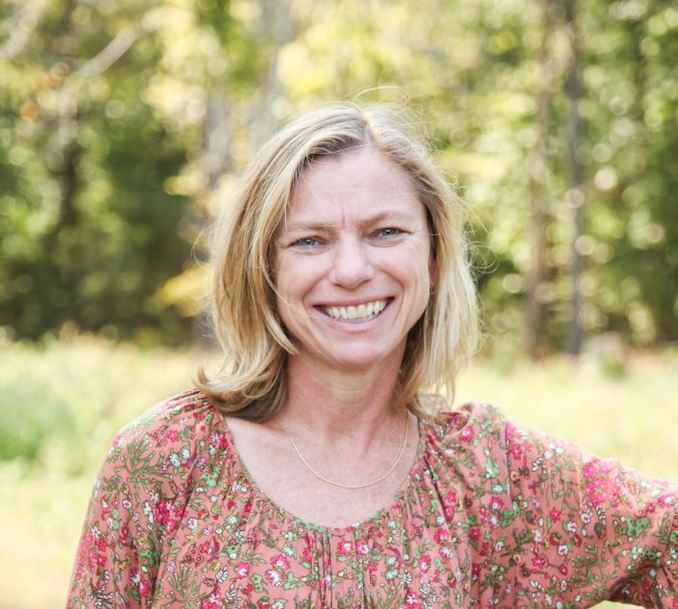By Gary L. Heckman
Over the years, I have listened to and read with interest the Solari Report and the wide variety of topics discussed and recommendations made to better our lives. I have tried to relate many of the issues to my life and how I could personally encompass the numerous suggestions directly within my circle of relatives, friends, and community. As often happens, we become engrossed with our day-to-day activities and never give much thought to the more important details of life. I would like to relate my experiences on “going local” as so often expressed by Catherine and her many guests such as Joseph Farrell, Jon Rappoport, and Harry Blazer.
Before I elaborate on the lifestyle I have developed, I would like to give you a little history about myself and family and what shaped our values. Both my wife and I were born and raised in rural areas of northern Michigan and as such, became more aware of self-sufficiency and the country life in contrast to the urban lifestyle, which has somewhat of a different value system. As with many of us raised in this environment, we strive to leave this type of setting and look for the more convenient and exciting side of life found in more urban areas.
This is what I did as I went off to college, learned a profession, and moved to the city. Yes, I got caught up in the city life and became used to the modern conveniences and ease of acquiring the many needs and luxuries of life. However, even during this time, I had a desire to get back to my roots and move away from the “rat race” of the city. I remember subscribing to “Mother Earth News” and reading it from cover to cover trying to learn the many self-sufficiency topics it dealt with. One article in particular that I could never seem to forget was titled, “Ten Acres and Independence”. You can imagine all the hints and suggestions it made to live off the grid independently on ten acres. As with many of these types of articles, some are realistic and some are unachievable and fantasy.
As fate would have it, I managed to find a local government job near my birthplace hometown, which resulted in my moving from the city back to the country. As would be expected, I was very excited about this move and settled in my grandfather’s original homestead expecting to live off the land with independence. After a while, reality hit me. Early cold morning long distant rides to my place of employment, dealing with the weather extremes, costly deficiencies in the original homestead, striving for modern conveniences, and very costly transportation expenses, not only for employment but also for food, materials, and other needs. So I realized that I needed to compromise and move from a very rural country setting to a more convenient small-town atmosphere.
Because I received my college degree in a few different areas-several majors and minors-I obtained employment as a City Manager in a small city in northern Michigan. This allowed me to have the practicalities of the contemporary life, and at the same time, not the ‘razzle- dazzle’ of the megalopolis city life. I should mention as City Manager, even in small-town America, I faced the same issues that are so thoroughly talked about in the recent Solari Report with Chuck Marohn– same issues and the same problems on a much smaller scale, but similar percentages with the same results. Cities over America are slowly going insolvent because of federal and state government policies, because of the demands of the public, not only for necessities, but also for ‘niceties’, and yet they don’t want their taxes to increase for these ‘niceties’. Yes, we need adequate streets and highways, public utilities, transportation services, social programs to some extent, education, and other essential needs, however, should these services suffer because the public wants playgrounds, boardwalks, museums, swimming beaches, parks, recreational services etc.?
While it is nice to provide everything at the public expense, it does lead to a money crunch, tax increases, and a need to set priorities. Local officials are sometimes pressured to provide services, real estate, tax relief and other incentives to encourage economic development, which many times are speculative, at best. These types of proposals may appear to stimulate the local economy but should be thoroughly scrutinized before any commitments are made. Sometimes in these cases, the local government carries the risk for the speculator.
Before I digress too far, I would like to relate one more story that is pertinent to “going local” and ties in with the recent Solari Report, “Amazon Buys Whole Foods” with Harry Blazer. The crux of the report is that corporate America is absorbing the consumer goods purchasing power including food, which has, for all intents and purposes, put small ‘ma and pa’ businesses and even some grocery stores and chains out of business. A larger town north of where we live recently had a Meijer’s store open. Not long after that, the local grocery store chain closed; K-Mart store closed; JC Penny store closed; and many other small businesses that couldn’t compete closed. Meanwhile, in a town just south of us, Meijer approached them to build one of their stores in that town. The stipulation was that if the town supplied sewer and water, they would build. The City Council held firm and said that Meijer’s would have to pay for their own infrastructure if they wanted to build. Believe it or not, there was a big sigh of relief from the citizens and existing businesses thankful that this piece of corporate America was not coming to their town.
Getting Started
After a few years of living in the small town where I worked, an opportunity arose allowing me to exchange my home in town to a more rural, yet still not isolated home. The home came with 40 acres but needed a great deal of work, in some measure, modernize and make room for expansion. These tasks were addressed and after a few years, the home became more comfortable. This is where the real story begins on ‘going local’. Not to say that we weren’t local in the sense that we tried to do as much as possible locally. We shopped at farmer’s markets when possible, banked at local banks, acquired our mortgage locally, shopped at the local grocery and retail stores and tried to keep our spending locally, if possible. I knew that one of the first items needed to raise our own livestock was a barn. To get the material for this, I did some bartering using some of the timber from the original homestead as a trade-off for some lumber. The lumber came from a local sawmill and was part of the bartering proposal. The next issue was obtaining a building permit from the State of Michigan, which can be a long and cumbersome process, especially using non-graded lumber, which, in my opinion, is often better and stronger than lumber processed and graded through a lumberyard. In checking with my state building official, it was determined that a permit is not needed for agricultural buildings if more than half of the building is used for agriculture, which ours did.
The next issue was getting the local government’s approval to use our land for agricultural purposes. I went to the local planning commission for their approval, which, at first, was somewhat reluctant. I did some research on our property and discovered that it had been used for agriculture in the past, and the property was grandfathered in. Because our location is rural and because there are other agricultural uses nearby, I requested that the planning commission reconsider the zoning in the area where we are located from rural residential to agriculture. After some deliberation, they changed the zoning to allow for hobby farming and limited agricultural uses. Because our intent was to limit our farming and livestock uses for our family and ourselves, I agreed to the compromise.
I might mention one more thing regarding the location of the property and size. It is a 40-acre parcel that has approximately 10 acres of cleared land, with the remaining being wooded. All the property around the parcel is wooded and owned by the US Forest Service except for one 9-acre parcel. Needless to say, I wanted that parcel. I tried negotiating with the owner for it but their price was very unreasonable. I waited a few years and saw that the property had not sold and, as a matter of fact, was on the list for public auction because of delinquent taxes. I went to the auction and was hoping I could acquire it considering that the auction room was full, and I thought many people would be interested. I had a maximum in my mind that I would bid and vowed to stay within that amount. When the parcel came up, I bid less than half of what my maximum was and, to my surprise, was awarded the bid. My purchase price for the property was less than 17% of the seller’s asking price and less than 14% of the local assessor’s true cash value. This indicates that if you do the proper research and keep current on what is happening locally, it could pay off.
Gardening
Our first task was to plan a garden and determine the types of crops, watering system, mulching, fertilizing, and pest control. Our initial attempts involved the usual array of crops; corn, beans, broccoli, lettuce, spinach, potatoes, carrots, squash, melons, cucumbers, cabbage, and the like. We soon learned that it is easy to over-produce because your friends and relatives can only use so much, especially during harvesting time. We also learned that our growing season wasn’t long enough for certain crops, and the soil conditions weren’t amenable to all crops. From those lessons, we narrowed our crop selection to only what we could harvest, use, or give away. We eliminated corn, melons, lettuce, spinach, cabbage, and cauliflower. We also have apple and plum trees, which are used mainly for animal feed. We found that our season wasn’t long enough for melons to ripen, corn to develop, cabbage and cauliflower to mature. We eliminated lettuce and spinach because they would overproduce, and it was impossible to harvest and use what we grew. We knew that there were tricks to extend the growing season such as hothouses, early seedlings, composting, certain fertilizers for ph balance, mulching, etc. We wanted to make this the least labor intensive as we could and still have some produce for our efforts. Our composting consists of grass clippings, vegetative food wastes, and livestock bedding and manure. Mulch is made up of grass clippings and mostly straw from the livestock bedding. Our seeds and seedlings are gathered from previous year’s successful crops and from a local green house. We try to avoid as much as possible GMO plants and seeds. Our method of preserving is canning, freezing, or dehydrating.
At first, watering was an issue. We collected rainwater in 50-gallon barrels but soon learned that we needed much more, especially during the dry part of the season. We acquired three 300 hundred gallon containers from a local sand products’ producer for no cost. We cleaned and sterilized the containers and set up a collection system from the roof of our home and the barn. We found that with the collection system, we had plenty of water to last throughout the growing season. To date, our gardening is successful, producing just enough vegetables for ourselves, relatives, friends and neighbors and allows for some preservation and is not very labor intensive.
Livestock
As mentioned, the barn seemed to be of utmost importance. We knew that we wanted to raise animals but needed to decide which ones, how many, what our desires were, and how to raise successfully and with the least amount of labor. Our first round consisted of egg laying chickens, turkeys, and guinea hens. We acquired the chickens from a local egg farmer who replaced a portion of his hens each year and would sell the excess for a very reasonable price. The hens that we received were still laying eggs, and we found that we had plenty of eggs for ourselves and everyone else. The turkeys were raised for meat and the guineas for pest control, which proved to be very successful. Of course, all the birds were allowed to free rein other than a fenced-in area of approximately one acre, not to keep the birds in, but to keep the predators out. In our area, we have coyotes, foxes, bobcats, and an occasional wolf.
The following year we expanded our efforts and raised three pigs. Again, they were acquired from a local farmer as piglets, and our relatives shared our expenses because they wanted their own locally raised pork. We found that raising hogs was not that difficult because they are quite self-sufficient as long as they have plenty of water, food, and shelter. I made a small pen for them and enclosed an area of approximately one-half acre with an electric fence. The area was partially open and partially wooded allowing them to shade and sun as needed. It is amazing how smart pigs are learning to self-water through a nipple system and feed themselves with a self-closing feeding trough. Needless to say, the electric fence was a one shock learning tool even for two-week-old piglets. We fed the pigs all vegetable scraps and excess from the garden as well as protein grain that was obtained from a local feed mill using locally grown corn, soy, alfalfa, and wheat. Hogs will also root and eat just about any organic ingredient found in the soil. At the end of the season, we divided all the costs three ways, which resulted in around $2.00 per pound finished weight, including butchering, smoked meats, hams, bacon, etc. Sometimes you may pay less at a grocery store but these were home grown, not vaccinated, no growth hormones, tenderly raised hogs.
Our next endeavor with livestock was sheep. As with hogs, sheep are rather easy to raise as long as they have food, water, and shelter. The only issue we had with the sheep is that we acquired the lambs from a local farmer who would just give up the orphaned ones. As such, the first few weeks required bottle-feeding regularly throughout the day and night, which became quite a chore after a while. After weaning, however, they are quite self-sufficient and will drink from buckets or reservoirs, eat grain from troughs, and hay from feeder racks. Their food was also bought at the local feed mill, and the hay was grown nearby in one of the best hay producing regions in the United States. In fact, the hay grown in our area is shipped throughout the US because of its high quality. Sheep are grazing animals and love to eat fresh grass clippings as well grass growing in the yard. Similar to the hogs, we divided up the costs associated with them and found it very reasonable compared to purchasing from a grocery store. We process the fowl ourselves and had the other meat processed by a local butcher shop.
Conclusion
We have continued these practices during the last several years and hope to continue in the future. We have learned a great deal along the way and have much more learning to do. If you cannot be totally self-sufficient, it is important to know your neighbors and your community and try to keep as much as possible ‘local’. We have acquired so much knowledge from Solari and the variety of guests whom Catherine has on. You get the type of information that you will not read nor hear from the regular news media outlets. Solari has been a great resource and has motivated us to live the life we lead. I would strongly encourage everyone to, at least, get “just a taste” of Solari and review their website. You will find so much varied and unique information about local, national, and international issues facing us in our daily lives.
Related reading: Articles by Gary L. Heckman:
Want to Have a Real Impact? Shift Your Time to State and Local Politics










Fantastic! Such a great article, resonates with me. I agree- Solari has really helped us to think and act local and build an intentional community! Thanks Catherine and all your guests for pointing us in the right (positive) direction. There are small and big things we can all do when we go local- improving each other’s life along the way. I must say- our lives have been much better since we started on this positive path.